High-Purity Kaolin Processing: A Guide from Mine to Market
3640A complete guide to the kaolin mining process. Learn every step from raw material extraction to achieving high-purity kaolin using best industry practices.
View detailsSearch the whole station Crushing Equipment
As a manufacturer of professional Screen, we often get this question from our clients. The choice between a Shaker Screen and a Trommel Screen for topsoil is critical. The right decision leads to high productivity and profit. The wrong one leads to constant frustration and downtime. For almost all topsoil screening applications, especially those with variable moisture and clay content, a Trommel Screen is the superior choice. A shaker screen, also known as a vibrating screen, has significant limitations with this material. This guide will explain the technical reasons why, so you can make an informed investment for your operation.
The primary challenge in topsoil screening is not the rock content; it is the material’s physical properties. Topsoil naturally contains moisture, clay, and organic matter like roots and sod. These components make it sticky and cohesive. When you try to process this type of material on a flat Shaker Screen (Vibrating Screen), a major problem occurs: screen blinding. Blinding happens when the vibrating action of the screen forces the damp, sticky soil particles directly into the screen mesh openings. Instead of separating, the material gets packed in, like hammering pegs into holes. Within a very short time, the screen deck becomes a solid, clogged mat of mud. This stops all production. You then have to shut down the entire operation and manually scrape or pressure-wash the screens, which is the single biggest waste of time and labor in a topsoil operation.
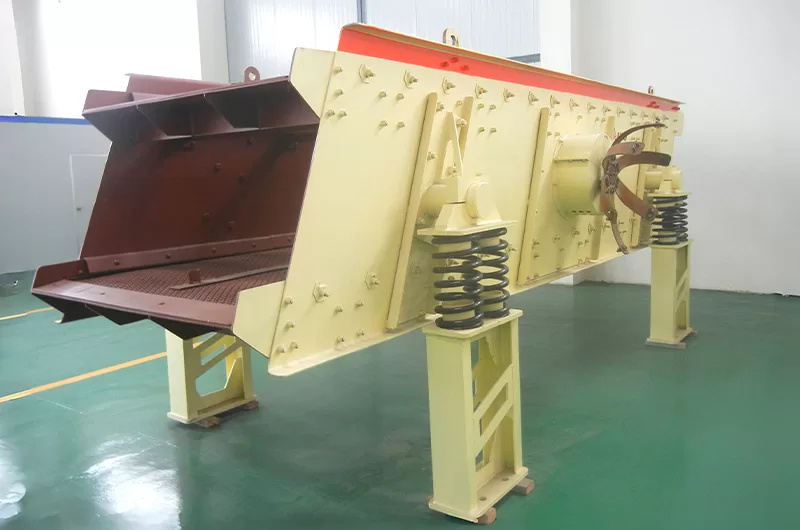
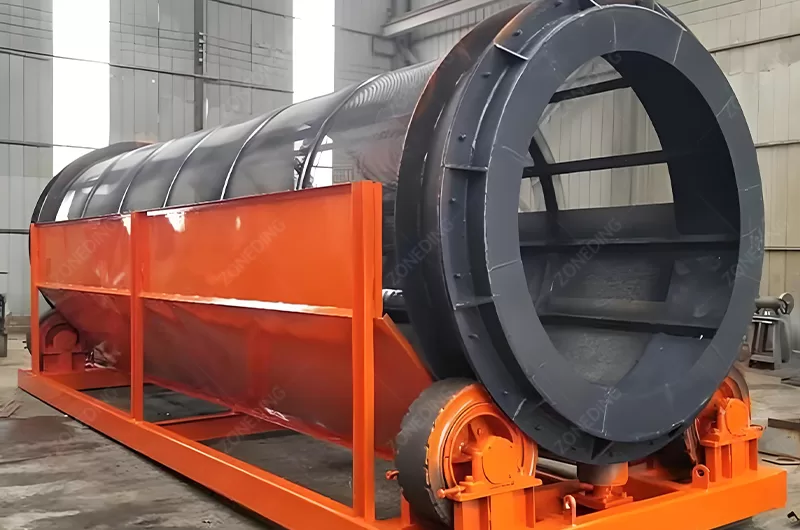
A Trommel Screen uses a completely different mechanical action that is perfectly suited for difficult materials like topsoil. Instead of vibrating a flat deck, a trommel is a large, cylindrical drum that is angled slightly and rotates. Material is fed into the higher end of the drum. Inside the drum, there are lifter bars that pick up the topsoil, carry it towards the top of the drum, and then allow it to drop. This continuous lifting and dropping motion is called tumbling. This tumbling action is highly effective because it breaks up clumps of clay and soil. The material cascades and separates gently under gravity, allowing the fine soil to fall through the screen holes without being forced. This process is far less likely to cause blinding compared to the aggressive, direct impact of a shaker screen.
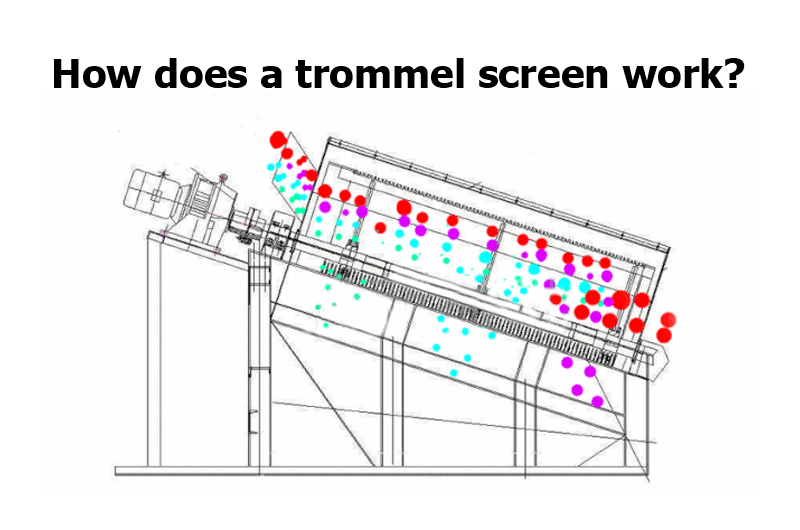
Furthermore, most professional-grade trommel screens include a critical feature that shaker screens lack: an external, rotating brush. This long, heavy-duty brush is mounted along the top of the screen drum. As the drum rotates, the brush is in constant contact with the outside of the screen mesh. It actively pushes out any particles that may begin to stick in the holes. This continuous, active self-cleaning mechanism is the key to maintaining consistent throughput all day, even when your topsoil is damp. A Mobile Trommel Screen equipped with this feature offers unmatched reliability for on-site topsoil processing.
The limitations of a shaker screen for topsoil go beyond just screen blinding. The fundamental design is not well-suited for the typical contaminants found in raw topsoil. Oversized rocks, for example, bounce violently on the flat screen deck. This aggressive bouncing can cause premature wear and damage to the screen media, leading to higher replacement costs and more downtime. Additionally, topsoil often contains long, stringy roots or clumps of sod. On a shaker screen, these materials do not flow smoothly. Roots can weave themselves into the screen mesh, creating a net that catches other materials and worsens clogging. This requires manual intervention to pull the roots out. A trommel, by contrast, handles these contaminants easily. The oversized rocks and roots simply tumble down the length of the angled drum and exit cleanly from the end, ensuring a clean separation with minimal hassle.
If your topsoil is consistently wet or you operate in a region with frequent rainfall, the choice is clear and simple: you must use a Trommel Screen. Attempting to use a shaker screen with very damp or clay-heavy topsoil will result in almost immediate and severe screen blinding. Your operation will spend more time stopped for cleaning than it does producing material. A trommel is specifically designed to handle these conditions. The tumbling action effectively separates the particles, while the self-cleaning brush ensures the screen holes remain open. This combination allows a trommel to maintain consistent production even with challenging, high-moisture materials. For any serious commercial topsoil operation where material quality is variable, a trommel is not just a better option; it is the only reliable option.
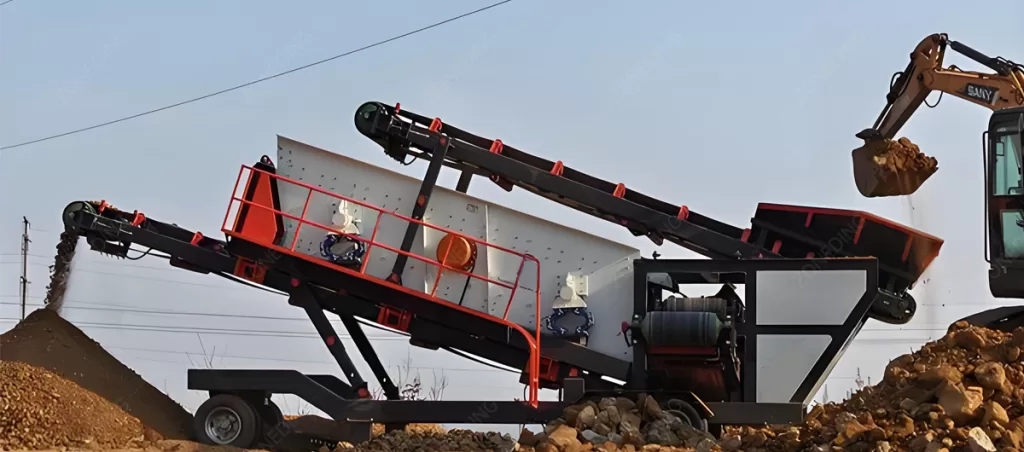
The screening action directly impacts the quality and appearance of your finished product. This is a critical factor for your customers, such as landscapers and garden centers, who demand a premium product. A Trommel Screen produces a superior final product. The tumbling action gently separates the soil particles and introduces air into the material. The result is a light, aerated, and “fluffy” topsoil that is easy to spread and visually appealing. It looks better in a stockpile and performs better in landscaping applications. A shaker screen can have the opposite effect on damp soil. The intense vibration can compact the fine particles, creating a denser, heavier product that is less desirable. For businesses that want to market their topsoil as a premium product, the quality delivered by a trommel is a significant advantage.
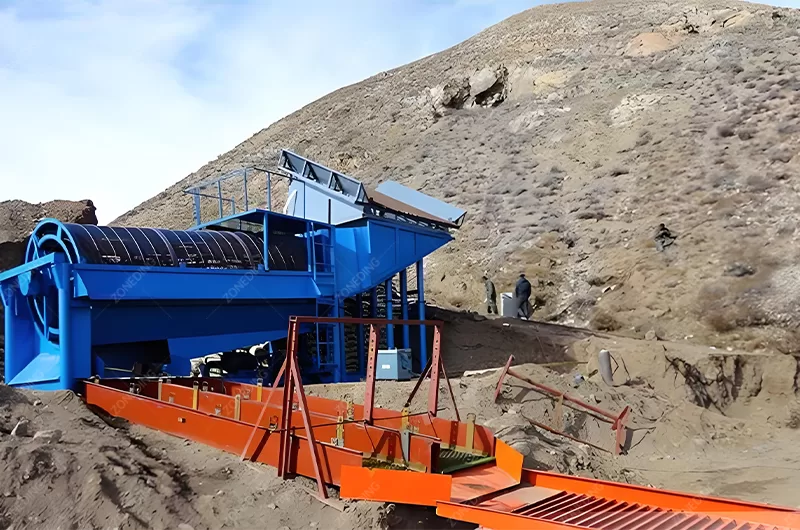
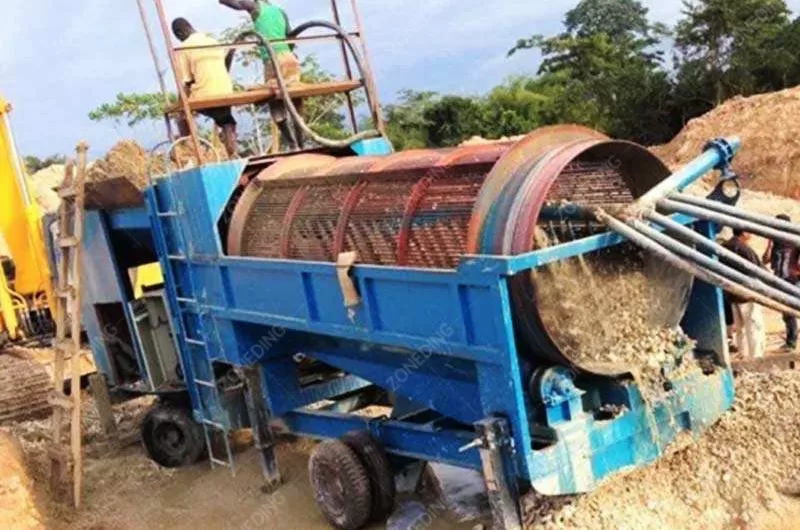
This is a common point of confusion. On paper, a Shaker Screen of a similar size might have a higher maximum tonnage-per-hour (TPH) rating than a trommel. However, this rating is deeply misleading for topsoil applications. The shaker’s high TPH rating is based on processing ideal, dry, free-flowing materials like sand or gravel. Topsoil is rarely ideal. The true measure of efficiency is not the theoretical maximum speed, but the actual, effective throughput over a full day of work. Because a shaker screen blinds so frequently with topsoil, its actual production is constantly interrupted by downtime for cleaning. A trommel may have a slightly lower on-paper TPH, but it runs continuously. A slightly slower machine that operates 95% of the time will always produce significantly more material than a “faster” machine that only operates 60% of the time due to clogging. Consistency is the key to profitability.
If your business plan includes screening other organic materials like compost, mulch, or wood chips, a Trommel Screen is the more versatile and effective choice. These materials share many characteristics with topsoil: they can be damp, clumpy, and contain stringy or fibrous elements. The tumbling action of a trommel is perfect for separating these materials without causing them to bind or clog the screen. Compost is gently broken up, and wood chips or mulch flow through the system smoothly. A shaker screen would struggle significantly with the stringy nature of wood chips and the inherent moisture and stickiness of compost, leading to the same blinding and clogging issues seen with topsoil. Therefore, a trommel represents a better long-term investment if you plan to diversify your product offerings.
When comparing costs, it is important to look beyond the initial purchase price and consider the Total Cost of Ownership (TCO). A Shaker Screen typically has a lower initial capital investment than a trommel of a similar capacity. This can be tempting for new businesses. However, this initial saving is often quickly lost due to higher operating costs. The TCO of a shaker for topsoil includes high labor costs for frequent screen cleaning, significant lost revenue from production downtime, and potentially higher costs for screen media replacement due to damage from bouncing rocks. A Trommel Screen has a higher initial price but is far more economical in the long run for a serious topsoil operation. Its reliability, low labor requirement for cleaning, and consistent uptime mean it generates more revenue and has a lower operating cost per ton of finished product.
| Cost Factor | Shaker Screen | Trommel Screen | Your Advantage with a Trommel |
|---|---|---|---|
| Initial Investment | Lower | Higher | Lower initial barrier to entry. |
| Labor Costs | High (for constant cleaning) | Very Low | Significantly reduced operating expenses. |
| Downtime | Frequent (due to blinding) | Minimal | Maximized production and revenue. |
| Product Quality | Can be compacted | Premium, aerated product | Ability to charge a higher price. |
| Long-Term ROI | Lower | Higher | More profitable and reliable operation. |
Q1: Can a shaker screen ever be used for topsoil?
A: Yes, but only in very specific, ideal conditions. If your topsoil is extremely sandy, very dry, and has almost no clay content, a shaker screen can work. However, you are betting your entire operation on consistent weather and material. The first rainy day or a load from a new source with higher clay content will shut you down.
Q2: What is the main cause of screen blinding?
A: Screen blinding is primarily caused by a combination of material moisture and the screening action. With a shaker screen, the vibration forces damp, sticky particles into the screen apertures, where they get stuck and accumulate until the screen is fully clogged.
Q3: How does a trommel’s self-cleaning brush work?
A: A trommel screen’s self-cleaning brush is a long, rotating brush mounted on the outside of the screen drum. As the drum turns, the stiff bristles of the brush continuously sweep the screen holes, physically pushing out any material that starts to stick. This active cleaning process prevents blinding before it can start.
Q4: Which screen handles rocks and roots better?
A: A trommel screen is far superior for handling contaminants like rocks and roots. The tumbling action allows oversized material to travel down the length of the drum and exit cleanly. On a shaker screen, rocks can bounce violently, damaging the screen, and long roots can weave into the mesh, causing severe clogging.
Q5: Are trommel screens available in mobile versions?
Yes, absolutely. Like shaker screens, trommel screens are widely available as track-mounted or wheeled mobile units. A Mobile Trommel Screen offers excellent flexibility, allowing you to move it easily around a job site or transport it between different locations.
A complete guide to the kaolin mining process. Learn every step from raw material extraction to achieving high-purity kaolin using best industry practices.
View detailsBoost iron ore plant performance. Learn strategies to boost recovery, enhance concentrate grade, and optimize operational efficiency for higher profits.
View detailsHow much does a basalt crushing plant cost? This guide breaks down the price of all machines, explains the process, and helps you budget for a profitable plant.
View detailsDive into the world of efficient mineral processing with our gold shaking table guide. Understand its mechanism, operation, and achieving high recovery rates.
View detailsWe use cookies to ensure that we give you the best experience on our website. If you continue to use this site we will assume that you are happy with it.
Privacy Policy